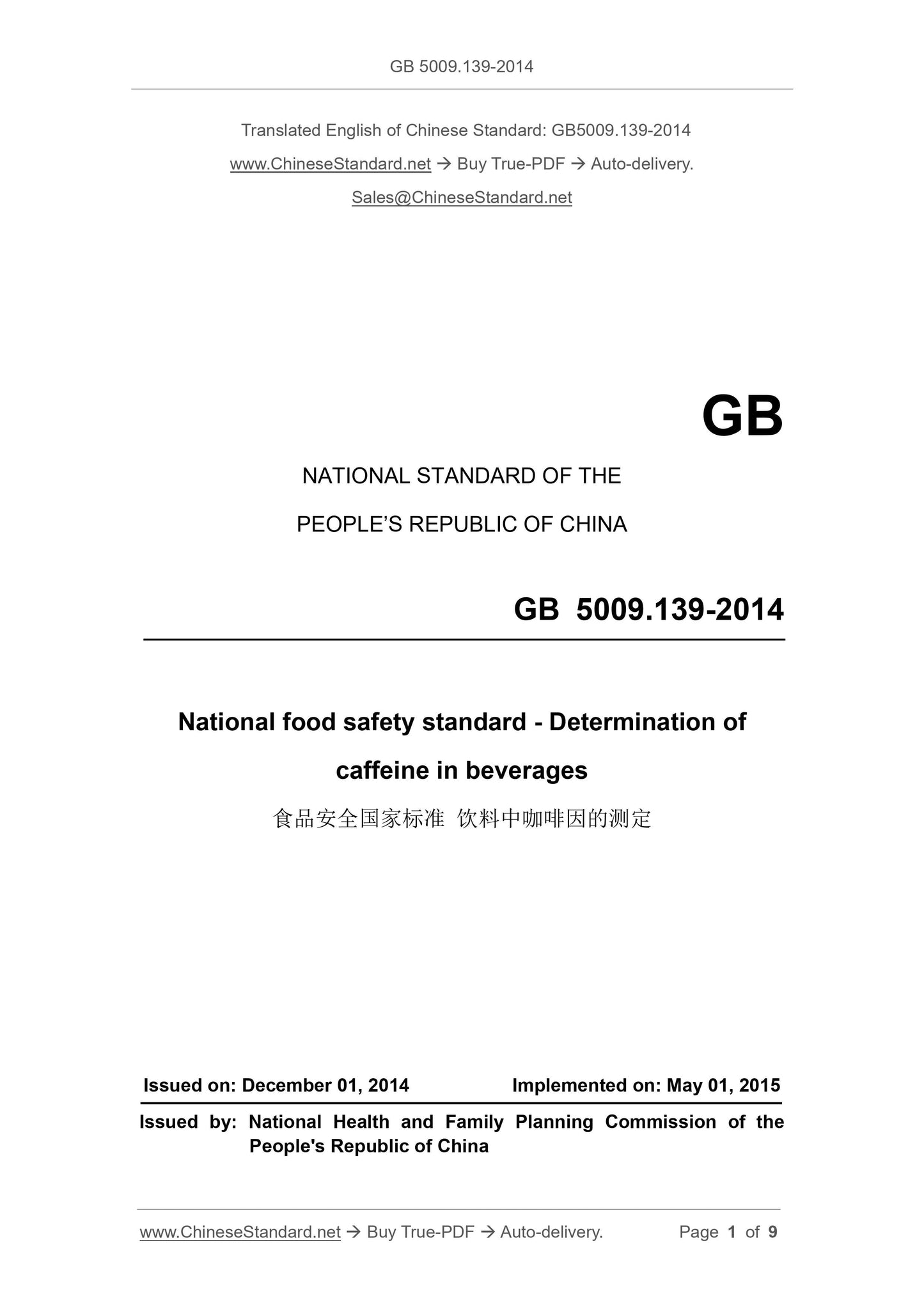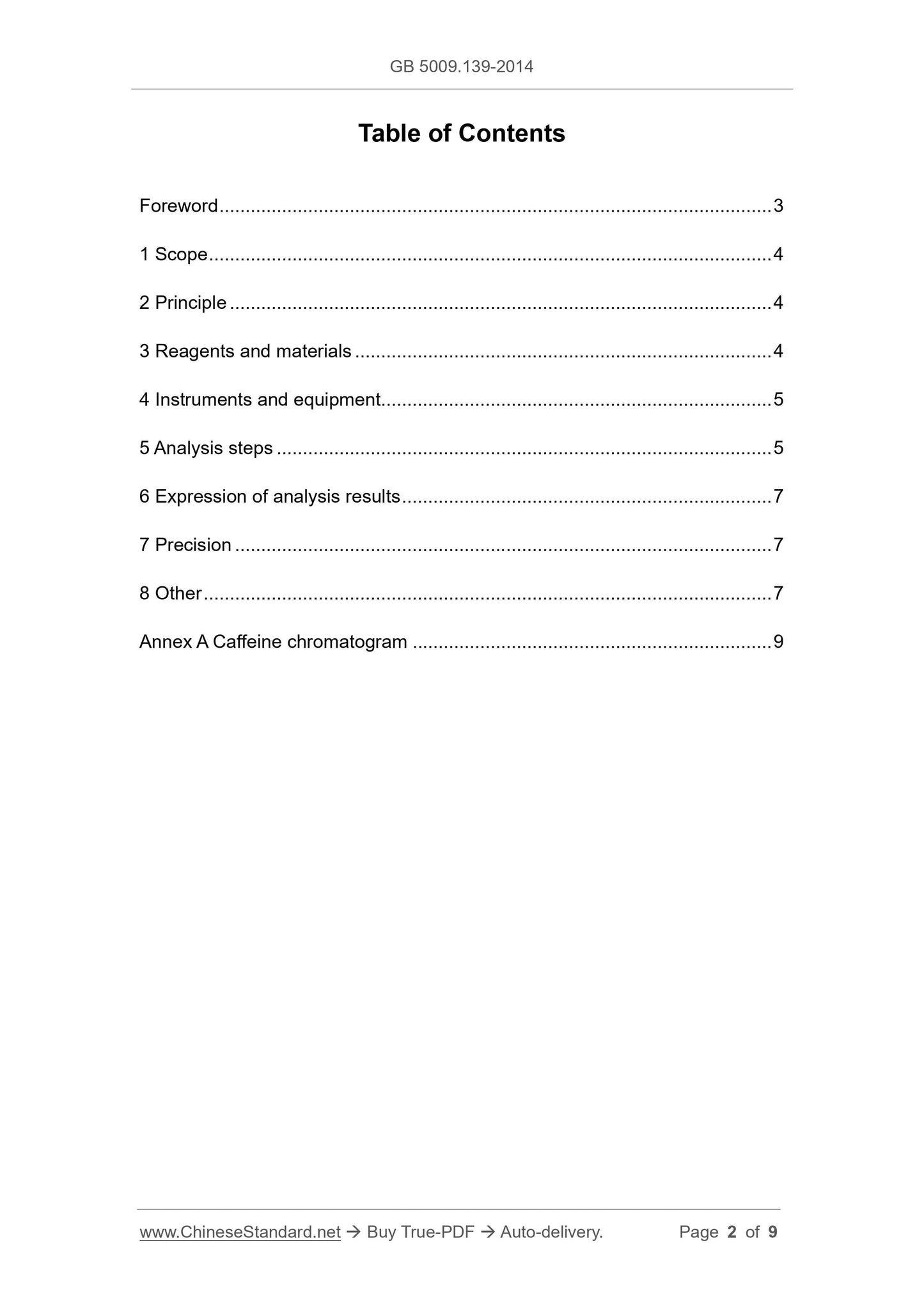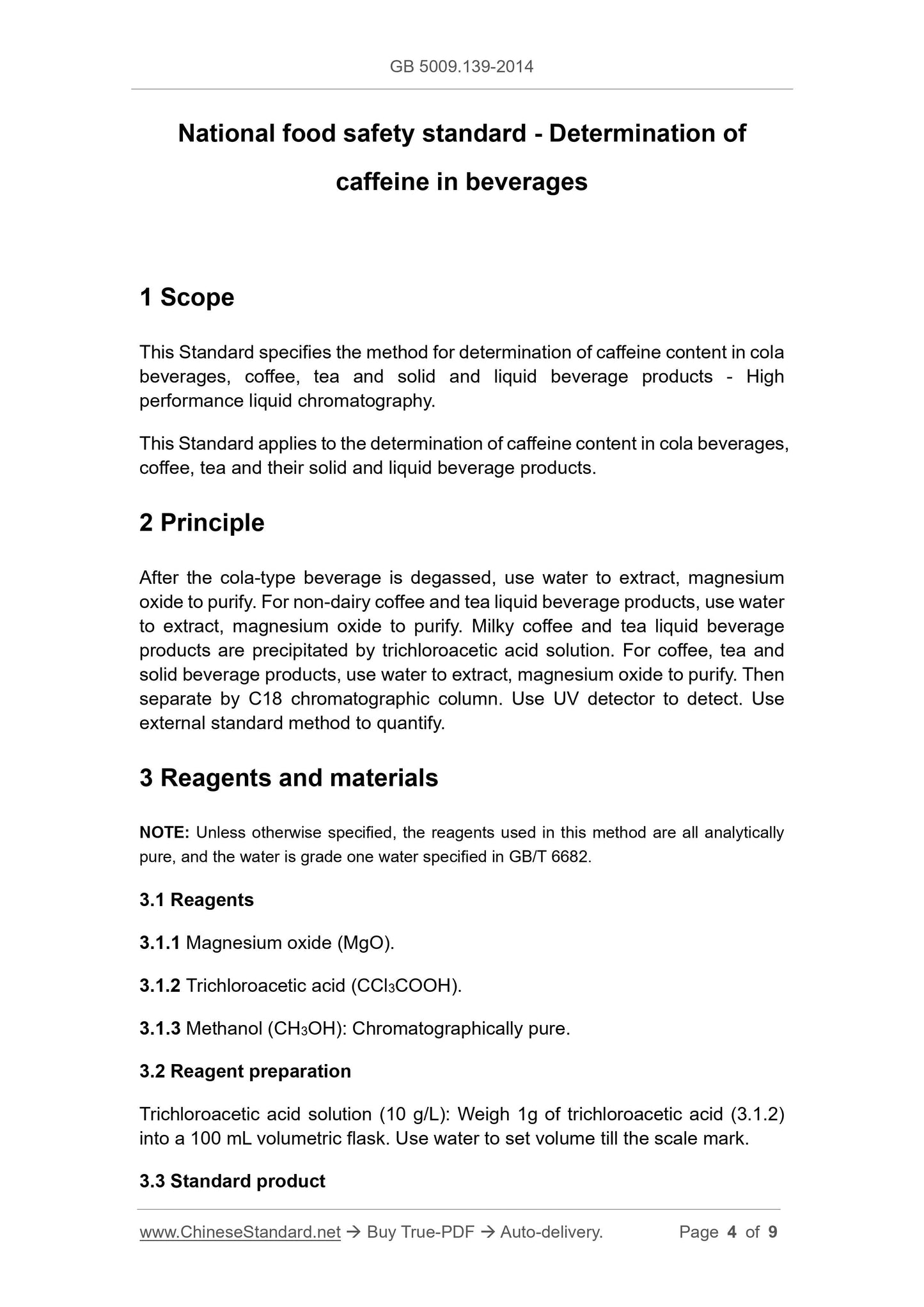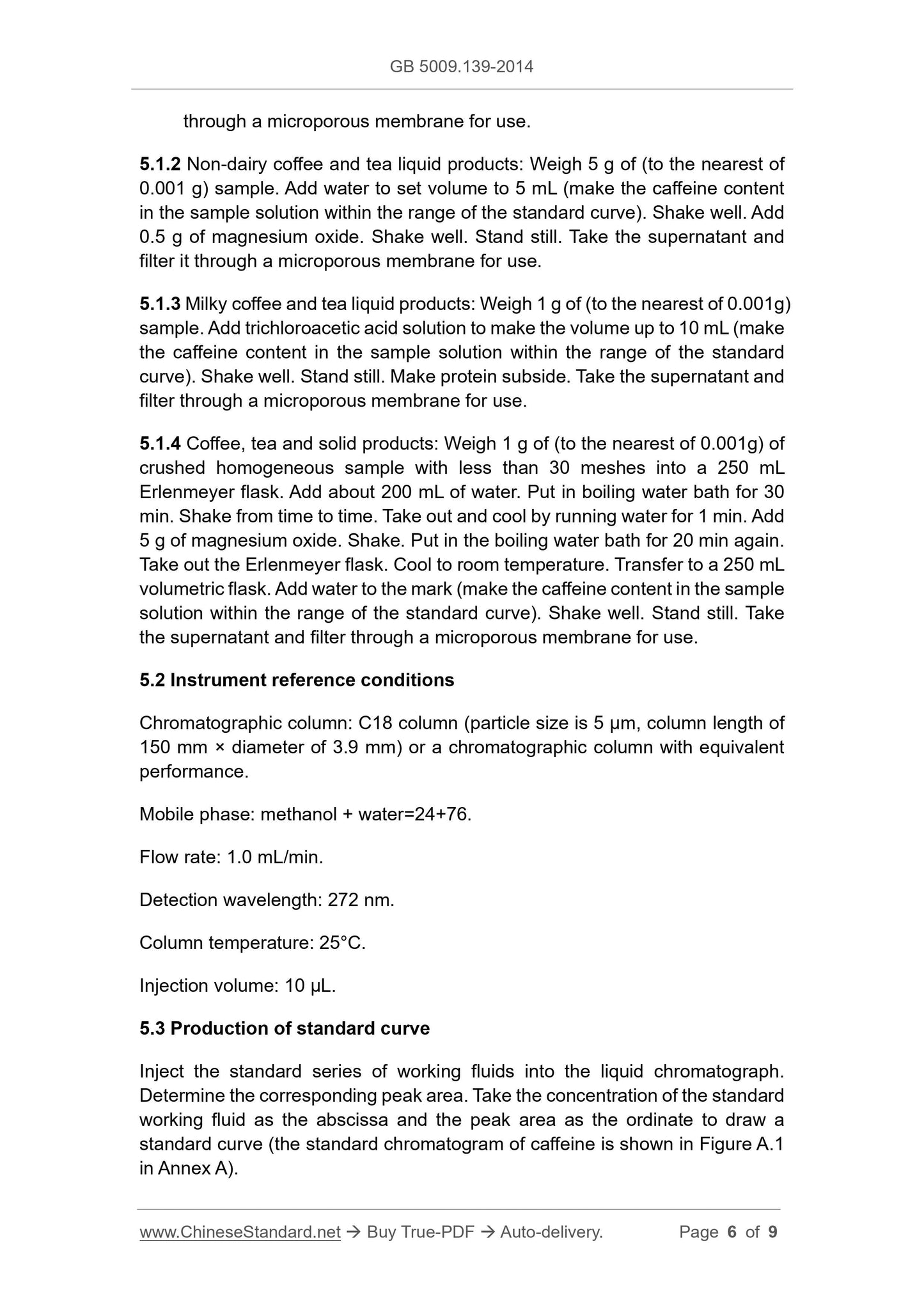1
/
of
4
www.ChineseStandard.us -- Field Test Asia Pte. Ltd.
GB 5009.139-2014 English PDF
GB 5009.139-2014 English PDF
Regular price
$110.00
Regular price
Sale price
$110.00
Unit price
/
per
Shipping calculated at checkout.
Couldn't load pickup availability
GB 5009.139-2014: National food safety standard -- Determination of caffeine in beverages
Delivery: 9 seconds. Download (and Email) true-PDF + Invoice.Get Quotation: Click GB 5009.139-2014 (Self-service in 1-minute)
Newer / historical versions: GB 5009.139-2014
Preview True-PDF
Scope
This Standard specifies the method for determination of caffeine content in colabeverages, coffee, tea and solid and liquid beverage products - High
performance liquid chromatography.
This Standard applies to the determination of caffeine content in cola beverages,
coffee, tea and their solid and liquid beverage products.
Basic Data
| Standard ID | GB 5009.139-2014 (GB5009.139-2014) |
| Description (Translated English) | National food safety standard -- Determination of caffeine in beverages |
| Sector / Industry | National Standard |
| Classification of Chinese Standard | C53 |
| Classification of International Standard | 67.040 |
| Word Count Estimation | 7,749 |
| Date of Issue | 12/1/2014 |
| Date of Implementation | 5/1/2015 |
| Older Standard (superseded by this standard) | GB/T 5009.139-2003; GB/T 19182-2003 |
| Regulation (derived from) | National Health and Family Planning Committee Announcement 2014 No. 19 |
| Issuing agency(ies) | National Health and Family Planning Commission of the People's Republic of China |
| Summary | This Standard specifies the method for determination of cola drinks, coffee, tea and beverage products in solid and liquid caffeine content - High Performance Liquid Chromatography. This Standard applies to the determination of cola drinks, coffee, tea an |
Share







